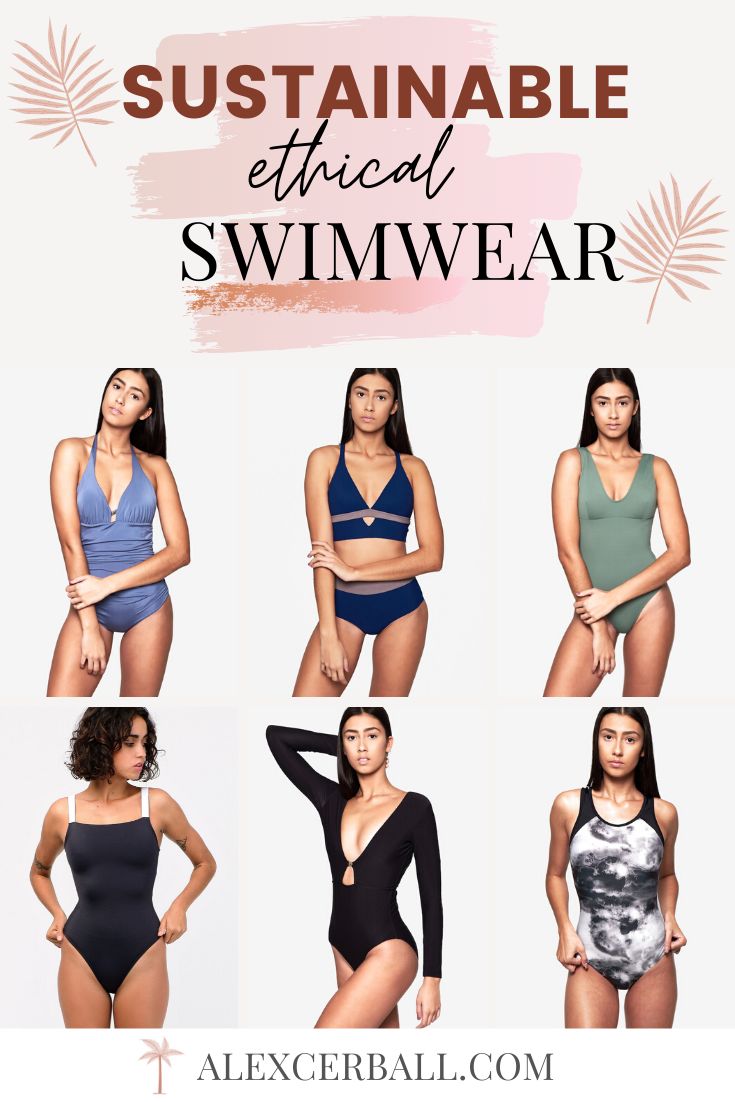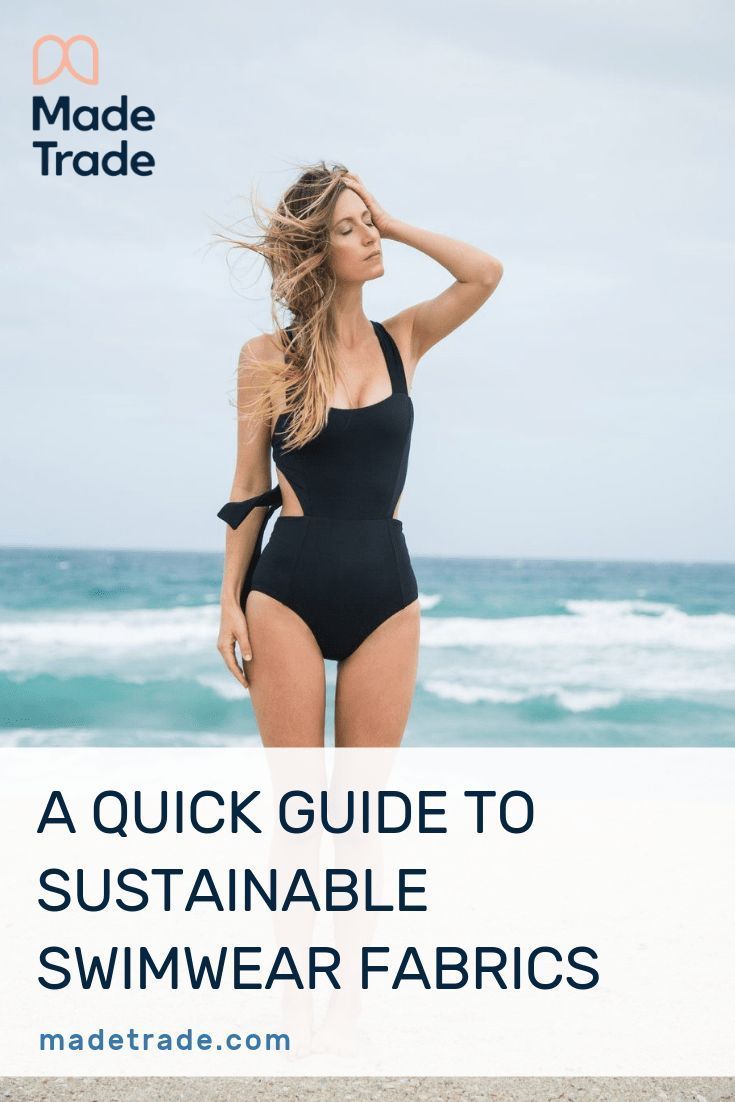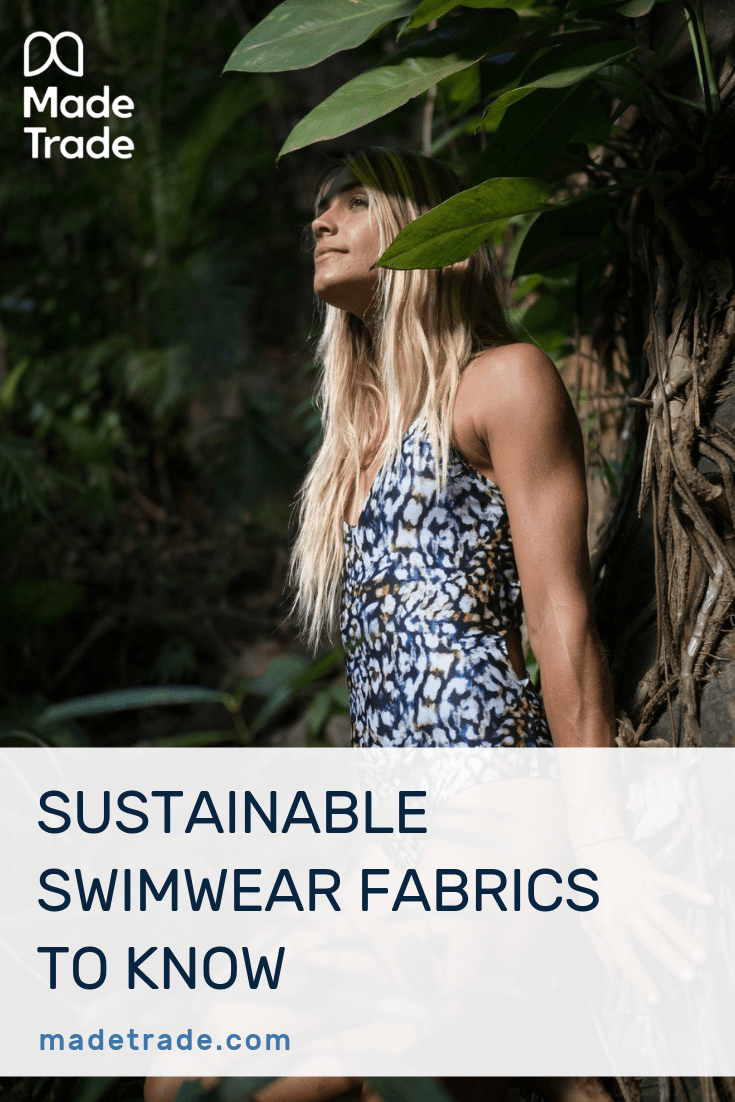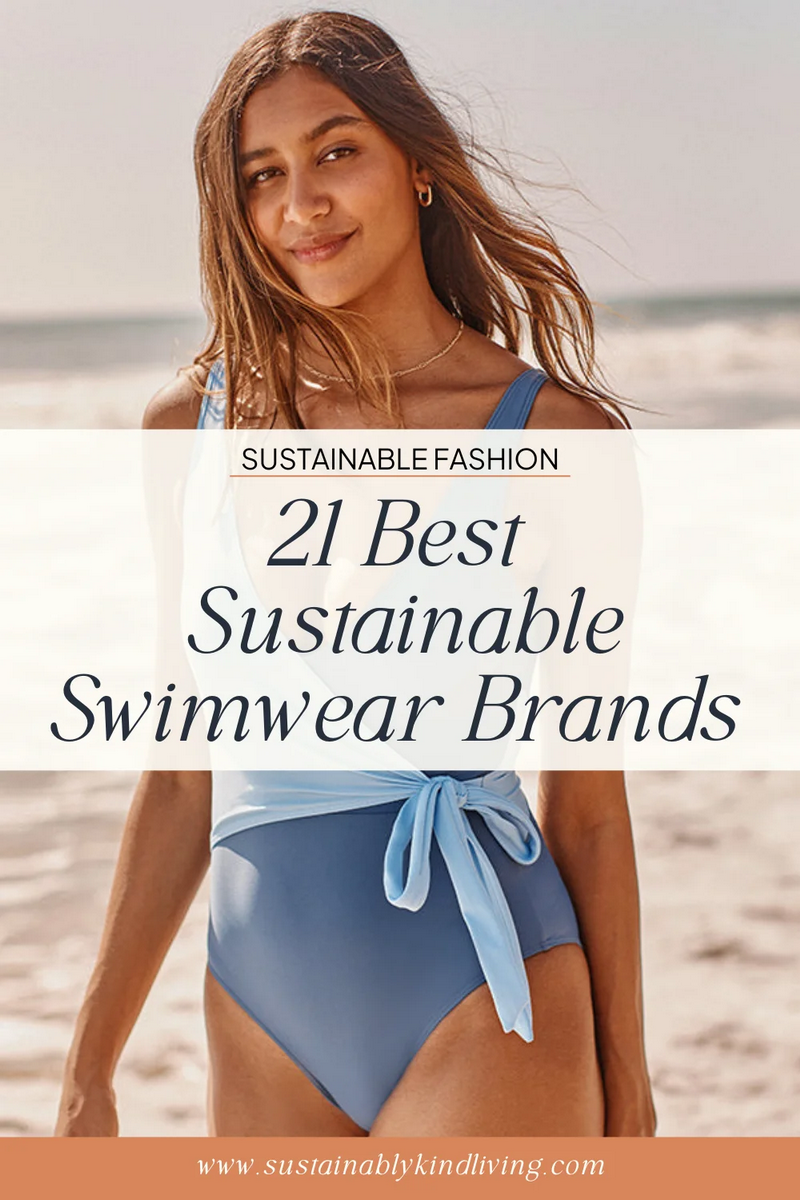Content Menu
● The Evolution of Sustainable Swimwear Manufacturing
● Innovative Materials and Production Processes
● Quality Control and Certification Standards
● Supply Chain Transparency and Ethical Practices
● Innovation and Technology Integration
● Supporting Brand Development and Growth
● Environmental Impact Reduction Strategies
● Collaboration and Industry Leadership
● Consumer Education and Awareness
● Future Developments and Innovations
● Conclusion
● Frequently Asked Questions
>> Q: What makes swimwear manufacturing sustainable?
>> Q: How do sustainable manufacturers verify their environmental claims?
>> Q: What role do sustainable manufacturers play in product development?
>> Q: How do manufacturers help brands maintain quality while being sustainable?
>> Q: What innovations are sustainable swimwear manufacturers currently developing?
● Video Resources
In recent years, the swimwear industry has undergone a remarkable transformation, with sustainable swimwear manufacturers leading the charge toward environmental responsibility and ethical production practices. This comprehensive exploration delves into how these manufacturers are revolutionizing the industry while supporting eco-friendly brands in their mission to create sustainable swimwear.

The Evolution of Sustainable Swimwear Manufacturing
The transformation of swimwear manufacturing has been nothing short of revolutionary over the past decade. Sustainable swimwear manufacturers have emerged as pioneers in the fashion industry, fundamentally reshaping how we approach the production of beach and swimwear. This evolution represents a significant departure from traditional manufacturing methods that often prioritized cost efficiency over environmental impact. Today's sustainable manufacturers have developed sophisticated systems that balance production efficiency with ecological responsibility, creating a new paradigm in the industry.
The journey toward sustainable manufacturing has been marked by significant technological advances and shifting consumer preferences. Manufacturers have invested heavily in research and development, creating innovative solutions that address both environmental concerns and market demands. This transformation has been particularly evident in how manufacturers approach material sourcing, waste management, and energy consumption. The industry has moved from linear production models to circular systems that emphasize resource conservation and waste reduction.
Innovative Materials and Production Processes
The cornerstone of sustainable swimwear manufacturing lies in the revolutionary materials and production processes employed by modern manufacturers. These companies have developed sophisticated methods for transforming recycled materials, particularly ocean plastics and post-consumer waste, into high-performance fabrics that rival or exceed traditional materials in quality and durability. The process begins with careful material selection, where manufacturers work with specialized recycling partners to source high-quality recovered plastics that meet strict quality standards.
Advanced processing techniques have been developed to ensure these recycled materials maintain the necessary properties for swimwear, including chlorine resistance, UV protection, and shape retention. Manufacturers employ cutting-edge technologies such as advanced polymer processing and specialized fiber treatments to enhance the performance characteristics of recycled materials. This includes innovative methods for improving the elasticity and recovery of recycled fibers, ensuring they meet the demanding requirements of swimwear applications.

Quality Control and Certification Standards
The implementation of rigorous quality control measures represents a critical aspect of sustainable swimwear manufacturing. Modern facilities maintain sophisticated testing laboratories equipped with state-of-the-art equipment for evaluating material properties, color fastness, and performance characteristics. These laboratories conduct comprehensive testing protocols that assess factors such as chlorine resistance, UV protection, and fabric stability under various conditions. The quality control process extends beyond material testing to encompass every aspect of production, from pattern making to final assembly.
Certification standards play a crucial role in validating the sustainability claims of manufacturers and their products. Leading manufacturers work closely with certification bodies to ensure compliance with international standards such as Global Recycled Standard (GRS), OEKO-TEX, and Fair Trade certifications. These certifications require regular audits and assessments of manufacturing facilities, material sourcing practices, and labor conditions. The certification process involves detailed documentation of supply chain transparency, chemical management systems, and waste reduction initiatives.
Supply Chain Transparency and Ethical Practices
Modern sustainable swimwear manufacturers have revolutionized supply chain management by implementing comprehensive tracking systems that monitor materials from source to final product. These systems provide detailed information about material origins, processing methods, and transportation routes, enabling brands to communicate accurate sustainability metrics to their customers. Advanced blockchain technology and digital tracking systems are increasingly being employed to ensure complete supply chain visibility and accountability.
The commitment to ethical practices extends beyond environmental considerations to encompass social responsibility and worker welfare. Manufacturers invest in employee training programs, health and safety initiatives, and fair compensation systems. Many facilities have implemented advanced ergonomic workstations, climate-controlled environments, and comprehensive employee benefit programs. These initiatives not only improve working conditions but also contribute to higher product quality and increased workforce stability.

Innovation and Technology Integration
The integration of advanced technology in sustainable swimwear manufacturing represents a significant investment in the future of the industry. Manufacturers are implementing sophisticated digital systems for pattern making, cutting, and production planning that minimize waste and optimize resource utilization. These systems employ artificial intelligence and machine learning algorithms to improve efficiency and reduce environmental impact.
The technology integration extends to energy management systems, water recycling facilities, and automated quality control processes. Manufacturers are increasingly adopting solar power systems, advanced water treatment facilities, and energy-efficient equipment to reduce their environmental footprint. These technological advances not only improve sustainability metrics but also enhance production efficiency and product quality.
Supporting Brand Development and Growth
The relationship between sustainable swimwear manufacturers and eco-friendly brands extends far beyond traditional supplier-client dynamics. Modern manufacturers serve as strategic partners in brand development, offering comprehensive support services that encompass every aspect of product creation and market positioning. These partnerships often begin at the conceptual stage, where manufacturers provide invaluable insights into sustainable material options, design feasibility, and production optimization strategies. Their expertise helps brands navigate the complex landscape of sustainable fashion while maintaining their unique aesthetic vision.
Manufacturers also play a crucial role in helping brands scale their operations sustainably. This includes providing flexible production capabilities that can accommodate growing demand without compromising environmental standards. Many manufacturers offer dedicated research and development facilities where brands can experiment with new materials and designs. They also provide detailed sustainability reports and impact assessments that brands can use in their marketing and transparency initiatives, helping them build credibility with environmentally conscious consumers.

Environmental Impact Reduction Strategies
The implementation of comprehensive environmental impact reduction strategies represents a cornerstone of sustainable swimwear manufacturing. Modern facilities employ sophisticated environmental management systems that monitor and optimize resource consumption across all operations. These systems track key metrics such as water usage, energy consumption, and waste generation in real-time, allowing manufacturers to identify and address inefficiencies promptly. Advanced water recycling systems, for instance, can reduce water consumption by up to 90% compared to traditional manufacturing processes.
Waste reduction initiatives extend beyond material recycling to encompass all aspects of operations. Manufacturers implement zero-waste cutting techniques that optimize fabric utilization, while advanced material recovery systems ensure that even small fabric scraps are repurposed or recycled. Energy efficiency programs include the installation of LED lighting, smart HVAC systems, and energy-efficient machinery. Many facilities have also invested in renewable energy sources, with some achieving complete carbon neutrality through a combination of on-site solar power generation and carbon offset programs.
Collaboration and Industry Leadership
Sustainable swimwear manufacturers have emerged as influential leaders in driving industry-wide sustainability initiatives. Through strategic partnerships with research institutions, environmental organizations, and industry associations, these manufacturers are actively shaping the future of sustainable fashion. Collaborative research projects focus on developing new eco-friendly materials, improving recycling technologies, and establishing industry-wide sustainability standards. These partnerships often result in breakthrough innovations that benefit the entire industry.
The leadership role extends to advocacy for stronger environmental regulations and industry standards. Manufacturers participate in industry forums, policy discussions, and sustainability conferences, sharing their expertise and promoting best practices. Many have established educational programs that help smaller brands and manufacturers transition to more sustainable practices. These collaborative efforts have created a powerful network of knowledge sharing and mutual support within the industry, accelerating the adoption of sustainable practices across the sector.

Consumer Education and Awareness
Modern sustainable swimwear manufacturers recognize that consumer education is crucial for driving industry transformation. They develop comprehensive educational materials that explain the environmental impact of traditional swimwear production and highlight the benefits of sustainable alternatives. These materials often include detailed information about material sourcing, production processes, and environmental certifications. Manufacturers work closely with brands to create transparent communication strategies that help consumers understand the value of sustainable swimwear.
The education initiatives extend to digital platforms, where manufacturers provide interactive content that demonstrates their sustainable practices. Virtual facility tours, behind-the-scenes videos, and detailed sustainability reports help consumers connect with the manufacturing process. Many manufacturers also participate in community outreach programs, organizing beach cleanups and environmental awareness campaigns that strengthen the connection between sustainable manufacturing and ocean conservation.
Future Developments and Innovations
The future of sustainable swimwear manufacturing is characterized by continuous innovation and technological advancement. Manufacturers are investing heavily in research and development of next-generation sustainable materials, including biodegradable synthetics and novel recycling technologies. Advanced manufacturing processes powered by artificial intelligence and automation are being developed to further reduce environmental impact while improving production efficiency.
Emerging technologies such as 3D printing and digital fabrication are being explored for their potential to revolutionize swimwear production. These technologies could enable on-demand manufacturing, significantly reducing inventory waste and overproduction. Manufacturers are also investigating closed-loop systems that would allow for the complete recycling of end-of-life swimwear into new products. The integration of blockchain technology for supply chain transparency and product authentication represents another promising development in the industry.

Conclusion
The role of sustainable swimwear manufacturers in supporting eco-friendly brands continues to evolve and expand. Through innovative technologies, comprehensive support services, and unwavering commitment to environmental stewardship, these manufacturers are driving the transformation of the swimwear industry. Their efforts extend beyond mere production to encompass education, advocacy, and industry leadership, creating a holistic approach to sustainability that benefits brands, consumers, and the environment.
Frequently Asked Questions
Q: What makes swimwear manufacturing sustainable?
Answer: Sustainable swimwear manufacturing incorporates eco-friendly materials, water conservation measures, energy-efficient processes, waste reduction strategies, and ethical labor practices. It focuses on minimizing environmental impact while maintaining high-quality standards.
Q: How do sustainable manufacturers verify their environmental claims?
Answer: Manufacturers undergo regular third-party audits, maintain international certifications, conduct material testing, and document their environmental impact through various metrics and assessments.
Q: What role do sustainable manufacturers play in product development?
Answer: They provide technical expertise, material guidance, design consultation, and support throughout the product development process, ensuring brands can create environmentally responsible swimwear.
Q: How do manufacturers help brands maintain quality while being sustainable?
Answer: Manufacturers implement rigorous quality control measures, use advanced testing equipment, and maintain strict production standards while incorporating sustainable practices and materials.
Q: What innovations are sustainable swimwear manufacturers currently developing?
Answer: Current innovations include new recycled materials, water-free dyeing techniques, zero-waste cutting methods, biodegradable packaging solutions, and energy-efficient manufacturing processes.
Video Resources
HOW TO START A SWIMWEAR BRAND| Business Tips on Launching a Swimwear Line
Koru Swimwear LLC / Koru Eco Brand Cocoa Beach, FL _ Around the Town




































































